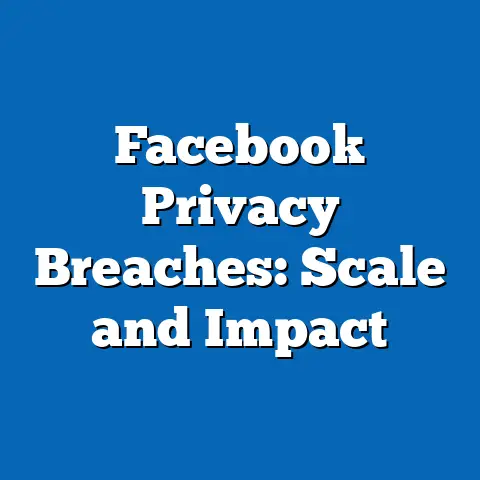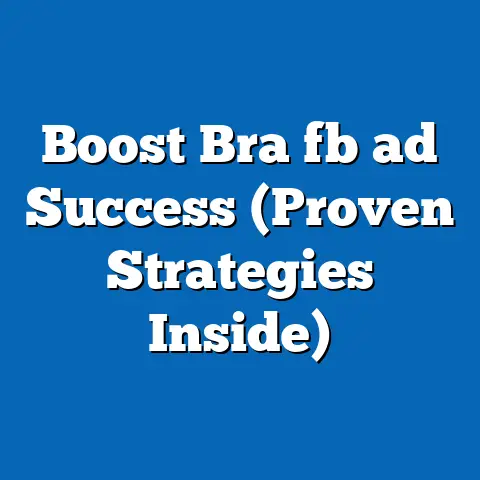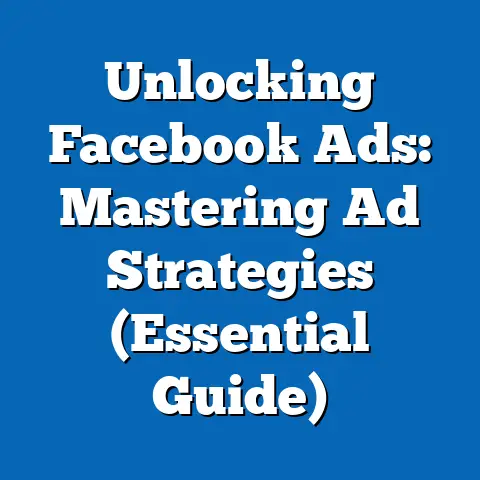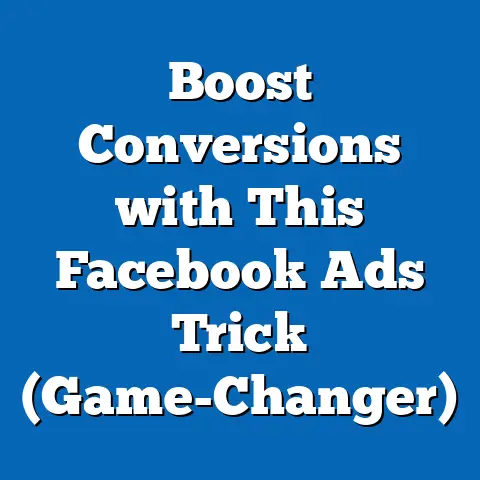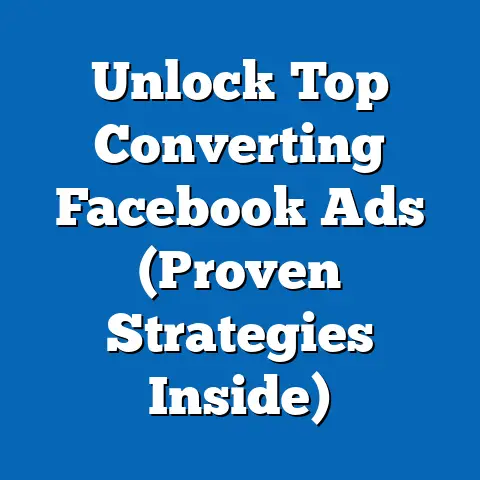Master Card Removal (Expert Steps for Facebook Ads)
In today’s rapidly evolving digital marketing landscape, one thing is certain: change is the only constant. We’re witnessing a technological revolution that’s reshaping how businesses connect with their audiences. At the forefront of this transformation is online advertising, and no platform has been quite as influential as Facebook.
Facebook has fundamentally altered the way businesses approach digital marketing and advertising. It’s no longer enough to simply have a website; you need a strong presence on social media, and a well-executed Facebook Ads strategy is crucial. With its unparalleled reach and sophisticated targeting capabilities, Facebook Ads has become an indispensable tool for businesses of all sizes aiming to effectively reach their target audiences and maximize their return on investment (ROI).
I’ve seen firsthand how a well-crafted Facebook Ad campaign can transform a struggling business into a thriving one. But managing these campaigns effectively involves more than just creating compelling ads; it also requires a solid understanding of the platform’s financial aspects.
That’s where the concept of “Master Card Removal” comes in. It might sound like a minor detail, but for businesses seeking to streamline their ad management processes, it’s a critical consideration. Whether it’s due to financial management concerns, security protocols, or simply a desire for greater control over payment methods, understanding how to remove and manage your Master Card within Facebook Ads is essential.
Understanding Master Card Removal
So, what exactly does “Master Card Removal” mean in the context of Facebook Ads? Simply put, it refers to the process of deleting or disassociating a Master Card (or any credit/debit card) from your Facebook Ads account. This action prevents Facebook from automatically charging that card for your advertising expenses.
I’ve worked with numerous clients who’ve chosen to remove their Master Card for various reasons, and it’s important to understand the motivations behind this decision.
Why Businesses Opt for Master Card Removal
There are several compelling reasons why a business might choose to remove its Master Card from Facebook Ads. Here are some of the most common:
- Financial Management: Perhaps the most prevalent reason is to gain greater control over advertising expenses. By removing the Master Card, businesses can prevent unexpected charges and better manage their budgets. I’ve seen cases where employees inadvertently launched large-scale campaigns, resulting in significant and unplanned expenses. Removing the card allows for more deliberate and controlled spending.
- Security Concerns: In an age of increasing cybersecurity threats, many businesses are understandably cautious about storing sensitive financial information online. Removing the Master Card reduces the risk of unauthorized access and potential fraud. I remember one client who experienced a data breach and immediately removed all credit card information from all online platforms, including Facebook Ads, as a precautionary measure.
- Changing Payment Preferences: Businesses may switch to alternative payment methods, such as PayPal or direct bank transfers, for various reasons. They might prefer the convenience of PayPal, the lower fees associated with bank transfers, or simply want to consolidate their online payments.
- Employee Turnover: When employees who have access to the Facebook Ads account leave the company, it’s crucial to remove their associated payment methods to prevent unauthorized charges. This is a standard security protocol that I always recommend to my clients.
- Testing Purposes: Sometimes, I remove my own card from test ad accounts to ensure no accidental charges occur during experimentation. This allows me to freely explore the platform’s features without financial risk.
- Subscription Management: If you’ve linked your Master Card to a Facebook Ads subscription or service, removing it can help you cancel the subscription and avoid future charges.
Impact on Ad Performance and Budgeting Strategies
Removing your Master Card can have both positive and negative impacts on your ad performance and budgeting strategies. It’s crucial to understand these implications before making the decision.
Potential Benefits:
- Improved Budget Control: As mentioned earlier, removing the Master Card gives you greater control over your advertising budget. You can manually add funds as needed, preventing unexpected overspending.
- Enhanced Security: By reducing the risk of unauthorized charges, you can protect your business from financial losses.
- Greater Flexibility: You can switch to alternative payment methods that better suit your needs and preferences.
- Reduced Risk of Accidental Charges: Especially useful when testing new campaigns or features.
Potential Drawbacks:
- Interrupted Ad Delivery: If you don’t have a backup payment method in place, removing your Master Card can pause your ad campaigns. Facebook requires a valid payment method to run ads.
- Delayed Billing: If you’re on a post-pay billing cycle, removing your Master Card can delay the payment process and potentially lead to account restrictions.
- Increased Administrative Burden: Manually adding funds to your account can be more time-consuming than automatic billing.
- Potential for Missed Opportunities: If you run out of funds and don’t replenish them promptly, you could miss out on valuable advertising opportunities.
Takeaway: Understanding the reasons for Master Card removal and its potential impact is crucial for making informed decisions. Carefully weigh the benefits and drawbacks before taking action.
The Importance of Payment Methods in Facebook Advertising
Choosing the right payment method is a critical aspect of managing your Facebook Ads effectively. It can impact everything from your ad spend and tracking to your overall campaign management.
Payment Methods Available for Facebook Ads
Facebook offers several payment methods for advertising, each with its own advantages and disadvantages. Here’s a breakdown of the most common options:
- Credit/Debit Cards: This is the most widely used payment method. Facebook accepts major credit and debit cards, including Visa, Mastercard, American Express, and Discover.
- Advantages: Convenient, widely accepted, allows for automatic billing.
- Disadvantages: Potential security risks, can lead to overspending if not carefully monitored, may incur interest charges if balances aren’t paid on time.
- PayPal: This is a popular online payment platform that allows you to link your bank account or credit card.
- Advantages: Secure, convenient, allows you to manage your payments in one place, offers buyer protection.
- Disadvantages: May incur transaction fees, requires a PayPal account.
- Direct Bank Transfers: This option allows you to directly transfer funds from your bank account to Facebook.
- Advantages: Lower fees compared to credit cards and PayPal, direct control over payments.
- Disadvantages: Can be more time-consuming than other methods, may require additional verification.
- Facebook Ads Credit: This is a credit that Facebook may offer to advertisers, typically as part of a promotion or incentive program.
- Advantages: Free advertising, can help you test new campaigns or features.
- Disadvantages: Limited availability, may have expiration dates or other restrictions.
- Local Payment Methods: Depending on your location, Facebook may offer other local payment methods, such as mobile wallets or online banking services.
- Advantages: Convenient for users in specific regions, may offer lower fees.
- Disadvantages: Limited availability.
- Advantages: Convenient, widely accepted, allows for automatic billing.
- Disadvantages: Potential security risks, can lead to overspending if not carefully monitored, may incur interest charges if balances aren’t paid on time.
- Advantages: Secure, convenient, allows you to manage your payments in one place, offers buyer protection.
- Disadvantages: May incur transaction fees, requires a PayPal account.
- Advantages: Lower fees compared to credit cards and PayPal, direct control over payments.
- Disadvantages: Can be more time-consuming than other methods, may require additional verification.
- Advantages: Free advertising, can help you test new campaigns or features.
- Disadvantages: Limited availability, may have expiration dates or other restrictions.
- Advantages: Convenient for users in specific regions, may offer lower fees.
- Disadvantages: Limited availability.
Comparing and Contrasting Payment Methods
Here’s a table summarizing the key differences between the most common payment methods:
| Payment Method | Advantages | Disadvantages |
|---|---|---|
| Credit/Debit Card | Convenient, widely accepted, automatic billing | Security risks, potential overspending, interest charges |
| PayPal | Secure, convenient, manage payments in one place, buyer protection | Transaction fees, requires a PayPal account |
| Bank Transfer | Lower fees, direct control over payments | Time-consuming, may require additional verification |
| Facebook Ad Credit | Free advertising, test new campaigns | Limited availability, may have restrictions |
| Payment Method | Advantages | Disadvantages |
|---|---|---|
| Credit/Debit Card | Convenient, widely accepted, automatic billing | Security risks, potential overspending, interest charges |
| PayPal | Secure, convenient, manage payments in one place, buyer protection | Transaction fees, requires a PayPal account |
| Bank Transfer | Lower fees, direct control over payments | Time-consuming, may require additional verification |
| Facebook Ad Credit | Free advertising, test new campaigns | Limited availability, may have restrictions |
How Payment Methods Influence Ad Spend, Tracking, and Campaign Management
The choice of payment method can significantly influence your ad spend, tracking, and overall campaign management.
- Ad Spend: Different payment methods may have different transaction fees or spending limits. Credit cards, for example, may have higher interest rates if you carry a balance, while bank transfers may have lower fees but require more manual effort.
- Tracking: Some payment methods, like PayPal, offer more detailed transaction tracking than others. This can be helpful for monitoring your ad spend and identifying areas for improvement.
- Campaign Management: Automatic billing with credit cards can simplify campaign management, but it can also lead to overspending if you’re not careful. Manual payments with bank transfers require more attention but give you greater control over your budget.
Takeaway: Carefully consider your needs and preferences when choosing a payment method for Facebook Ads. Weigh the advantages and disadvantages of each option to make an informed decision that aligns with your business goals.
Steps for Master Card Removal on Facebook
Now, let’s get to the practical part: how to actually remove your Master Card from your Facebook Ads account. I’ll walk you through the process step-by-step, with clear instructions and troubleshooting tips.
Important Note: Before removing your Master Card, make sure you have a backup payment method in place to avoid interrupting your ad campaigns.
Step 1: Logging into Facebook Business Manager
The first step is to log into your Facebook Business Manager account. This is where you manage all your business assets, including your ad accounts.
- Go to business.facebook.com.
- Enter your email address and password.
- If you have multiple Business Manager accounts, select the one you want to manage.
I’ve found that using a dedicated browser for Business Manager (like Chrome or Firefox) can help prevent conflicts with other Facebook accounts you might be logged into.
Step 2: Navigating to the Billing Section
Once you’re logged into Business Manager, you need to navigate to the Billing section. This is where you can manage your payment methods and view your transaction history.
- In Business Manager, click on the “All Tools” menu in the left-hand sidebar.
- Scroll down to the “Commerce” section and click on “Billing.”
Alternatively, you can search for “Billing” in the search bar at the top of the page.
Step 3: Selecting the Payment Method to be Removed
In the Billing section, you’ll see a list of your current payment methods.
- Locate the Master Card you want to remove.
- Click on the three dots (ellipsis) next to the card.
- Select “Remove” from the dropdown menu.
Step 4: Confirming the Removal Process
Facebook will ask you to confirm that you want to remove the Master Card.
- Read the confirmation message carefully.
- Click on “Remove” to confirm the removal.
You may be prompted to enter your Facebook password for security reasons.
Important: After removing the card, Facebook will likely prompt you to add a new payment method. If you don’t have one in place, your ad campaigns may be paused.
Troubleshooting Tips
Here are some common issues you might encounter during the removal process and how to resolve them:
- “You can’t remove this payment method because it’s the primary payment method for your ad account.”
- Solution: Add a new payment method and set it as the primary payment method before removing the old one.
- “There’s a pending balance on this payment method.”
- Solution: Pay the outstanding balance before removing the card.
- “You don’t have permission to remove this payment method.”
- Solution: Make sure you have the necessary admin privileges for the Business Manager account.
- “An error occurred while removing the payment method.”
- Solution: Try again later. If the issue persists, contact Facebook Ads support.
- Solution: Add a new payment method and set it as the primary payment method before removing the old one.
- Solution: Pay the outstanding balance before removing the card.
- Solution: Make sure you have the necessary admin privileges for the Business Manager account.
- Solution: Try again later. If the issue persists, contact Facebook Ads support.
I’ve personally dealt with all of these issues at some point, and the key is to be patient and methodical. Double-check your permissions, balances, and payment settings before contacting support.
Implications of Removing the Master Card
Removing your Master Card can have several implications for your ad account:
- Potential Delays in Ad Running: If you don’t have a backup payment method, your ads will be paused until you add a new one.
- Billing Adjustments: If you’re on a post-pay billing cycle, removing your card can delay the payment process and potentially lead to account restrictions.
- Account Restrictions: If you have outstanding balances or unpaid invoices, removing your card can trigger account restrictions.
Takeaway: Removing your Master Card from Facebook Ads is a straightforward process, but it’s important to follow the steps carefully and be aware of the potential implications. Always have a backup payment method in place to avoid interrupting your ad campaigns.
Alternatives to Master Card Payment
Removing your Master Card doesn’t mean you can no longer advertise on Facebook. Fortunately, there are several alternative payment options available. Let’s explore some of the most popular choices.
Exploring Other Payment Options
- PayPal: As mentioned earlier, PayPal is a widely accepted payment method that allows you to link your bank account or credit card.
- Benefits: Secure, convenient, allows you to manage your payments in one place, offers buyer protection.
- How to Set Up: Simply link your PayPal account to your Facebook Ads account in the Billing section of Business Manager.
- Direct Bank Transfers: This option allows you to directly transfer funds from your bank account to Facebook.
- Benefits: Lower fees compared to credit cards and PayPal, direct control over payments.
- How to Set Up: You’ll need to provide your bank account details and verify your account with Facebook.
- Prepaid Cards: These are debit cards that are pre-loaded with a specific amount of money.
- Benefits: Helps you control your spending, reduces the risk of overspending, can be a good option for businesses with limited credit.
- How to Use: Simply add the prepaid card as a payment method in the Billing section of Business Manager. Make sure the card has sufficient funds to cover your advertising expenses.
- Virtual Wallets: These are digital wallets that allow you to store and manage your payment information online. Examples include Google Pay and Apple Pay.
- Benefits: Secure, convenient, allows you to make payments from your mobile device.
- How to Use: If Facebook supports your virtual wallet, you can add it as a payment method in the Billing section of Business Manager.
- Benefits: Secure, convenient, allows you to manage your payments in one place, offers buyer protection.
- How to Set Up: Simply link your PayPal account to your Facebook Ads account in the Billing section of Business Manager.
- Benefits: Lower fees compared to credit cards and PayPal, direct control over payments.
- How to Set Up: You’ll need to provide your bank account details and verify your account with Facebook.
- Benefits: Helps you control your spending, reduces the risk of overspending, can be a good option for businesses with limited credit.
- How to Use: Simply add the prepaid card as a payment method in the Billing section of Business Manager. Make sure the card has sufficient funds to cover your advertising expenses.
- Benefits: Secure, convenient, allows you to make payments from your mobile device.
- How to Use: If Facebook supports your virtual wallet, you can add it as a payment method in the Billing section of Business Manager.
Benefits of Using Alternative Payment Methods
Each alternative payment method offers unique benefits that can be advantageous for different businesses:
- PayPal: Provides an extra layer of security and convenience, especially for businesses that already use PayPal for other online transactions.
- Direct Bank Transfers: Offers lower fees, which can be significant for businesses with large advertising budgets.
- Prepaid Cards: Helps businesses control their spending and avoid overspending, which is particularly useful for startups and small businesses.
- Virtual Wallets: Provides a convenient and secure way to make payments from mobile devices, which is ideal for businesses that manage their advertising on the go.
Case Studies: Successful Payment Method Shifts
I’ve worked with several clients who’ve successfully shifted their payment methods on Facebook Ads, and I’d like to share a couple of examples:
-
Case Study 1: Small E-commerce Business Switching to Prepaid Cards
A small e-commerce business was struggling to manage its advertising budget and frequently overspent. I recommended switching to prepaid cards to better control their spending. By pre-loading the cards with a specific amount of money each month, they were able to stay within their budget and avoid unexpected charges. This resulted in a more predictable and sustainable advertising strategy. * Case Study 2: Large Corporation Adopting Direct Bank Transfers
A large corporation with a significant advertising budget was paying hefty transaction fees on credit card payments. I suggested switching to direct bank transfers to reduce these fees. By setting up a direct bank transfer agreement with Facebook, they were able to save thousands of dollars each month. This significantly improved their ROI and allowed them to reinvest the savings into other marketing initiatives.
Case Study 1: Small E-commerce Business Switching to Prepaid Cards
A small e-commerce business was struggling to manage its advertising budget and frequently overspent. I recommended switching to prepaid cards to better control their spending. By pre-loading the cards with a specific amount of money each month, they were able to stay within their budget and avoid unexpected charges. This resulted in a more predictable and sustainable advertising strategy. * Case Study 2: Large Corporation Adopting Direct Bank Transfers
A large corporation with a significant advertising budget was paying hefty transaction fees on credit card payments. I suggested switching to direct bank transfers to reduce these fees. By setting up a direct bank transfer agreement with Facebook, they were able to save thousands of dollars each month. This significantly improved their ROI and allowed them to reinvest the savings into other marketing initiatives.
Takeaway: There are several viable alternatives to Master Card payments on Facebook Ads. By exploring these options and choosing the one that best suits your needs, you can gain greater control over your advertising budget, reduce transaction fees, and enhance your overall campaign management.
Best Practices After Master Card Removal
Removing your Master Card is just the first step. To ensure a smooth and successful transition, it’s important to adopt best practices for managing your Facebook Ads account without a Master Card.
Strategies for Effectively Managing Facebook Ads
Here are some strategies that I’ve found to be particularly effective:
- Set Up a Backup Payment Method: This is the most crucial step. Make sure you have a backup payment method in place before removing your Master Card. This will prevent your ads from being paused and ensure continuous ad delivery.
- Monitor Your Account Regularly: Keep a close eye on your ad spend and account balance. This will help you identify any potential issues and ensure that you have sufficient funds to cover your advertising expenses.
- Set Spending Limits: Facebook allows you to set daily and lifetime spending limits for your ad campaigns. This is a great way to control your spending and prevent overspending.
- Schedule Regular Payments: If you’re using a manual payment method, such as direct bank transfers, schedule regular payments to ensure that your account is always funded.
- Use Budget Rules: Facebook’s budget rules allow you to automate your budget management. You can set rules to automatically increase or decrease your budget based on performance.
- Track Your ROI: Regularly track your return on investment (ROI) to ensure that your advertising campaigns are generating a positive return. This will help you optimize your campaigns and allocate your budget effectively.
The Importance of Budget Tracking and Account Monitoring
Budget tracking and account monitoring are essential for managing your Facebook Ads effectively, especially after removing your Master Card.
- Budget Tracking: By tracking your budget closely, you can ensure that you’re staying within your spending limits and that your advertising campaigns are generating a positive ROI.
- Account Monitoring: Monitoring your account regularly can help you identify any potential issues, such as low account balances, disapproved ads, or account restrictions.
I recommend using a spreadsheet or a dedicated budget tracking tool to monitor your ad spend and account balance.
Optimizing Ad Campaigns and Managing Spending Limits
Optimizing your ad campaigns and managing your spending limits are crucial for maximizing your ROI and ensuring that your advertising budget is used effectively.
- Optimize Your Targeting: Make sure you’re targeting the right audience with your ads. This will help you improve your ad relevance and click-through rates.
- Improve Your Ad Creative: Use high-quality images and compelling ad copy to attract your target audience.
- Test Different Ad Formats: Experiment with different ad formats, such as image ads, video ads, and carousel ads, to see which ones perform best.
- Use A/B Testing: A/B testing allows you to test different versions of your ads to see which ones generate the best results.
- Set Realistic Spending Limits: Don’t set your spending limits too low, as this can limit your reach and prevent you from achieving your advertising goals.
- Adjust Your Spending Limits Based on Performance: If your ad campaigns are performing well, consider increasing your spending limits to reach a wider audience.
Takeaway: Managing your Facebook Ads account effectively after removing your Master Card requires a proactive approach. By setting up a backup payment method, monitoring your account regularly, setting spending limits, and optimizing your ad campaigns, you can ensure a smooth and successful transition.
Common Challenges and Solutions
Even with the best planning, you might encounter challenges after removing your Master Card from Facebook Ads. Let’s address some common issues and their solutions.
Identifying Common Challenges
- Interrupted Ad Delivery: This is perhaps the most common challenge. If you don’t have a backup payment method in place, your ads will be paused.
- Account Restrictions: If you have outstanding balances or unpaid invoices, removing your card can trigger account restrictions.
- Difficulty Adding a New Payment Method: Sometimes, Facebook may reject your new payment method due to security reasons or other issues.
- Unexpected Charges: Even after removing your Master Card, you might still see unexpected charges if you have recurring subscriptions or other billing agreements with Facebook.
- Limited Spending Limits: Some alternative payment methods, such as prepaid cards, may have lower spending limits than credit cards.
Expert Solutions for Overcoming These Challenges
Here are some expert solutions for overcoming these common challenges:
- Interrupted Ad Delivery:
- Solution: Always have a backup payment method in place before removing your Master Card.
- Account Restrictions:
- Solution: Pay any outstanding balances or unpaid invoices immediately. Contact Facebook Ads support to resolve any account restrictions.
- Difficulty Adding a New Payment Method:
- Solution: Double-check your payment information to ensure that it’s accurate. Contact your bank or payment provider to verify that your account is in good standing. Try using a different payment method. Contact Facebook Ads support for assistance.
- Unexpected Charges:
- Solution: Review your Facebook account activity to identify any recurring subscriptions or billing agreements. Cancel any subscriptions that you no longer need. Contact Facebook Ads support to dispute any unauthorized charges.
- Limited Spending Limits:
- Solution: Choose an alternative payment method with higher spending limits. Use multiple prepaid cards to increase your overall spending capacity. Contact Facebook Ads support to request a higher spending limit.
- Solution: Always have a backup payment method in place before removing your Master Card.
- Solution: Pay any outstanding balances or unpaid invoices immediately. Contact Facebook Ads support to resolve any account restrictions.
- Solution: Double-check your payment information to ensure that it’s accurate. Contact your bank or payment provider to verify that your account is in good standing. Try using a different payment method. Contact Facebook Ads support for assistance.
- Solution: Review your Facebook account activity to identify any recurring subscriptions or billing agreements. Cancel any subscriptions that you no longer need. Contact Facebook Ads support to dispute any unauthorized charges.
- Solution: Choose an alternative payment method with higher spending limits. Use multiple prepaid cards to increase your overall spending capacity. Contact Facebook Ads support to request a higher spending limit.
Effective Budget Management and Alternative Funding Strategies
Effective budget management and alternative funding strategies are crucial for overcoming the challenges associated with Master Card removal.
- Create a Detailed Budget: Develop a detailed budget that outlines your advertising goals, target audience, and spending limits.
- Track Your Spending Regularly: Monitor your ad spend and account balance regularly to ensure that you’re staying within your budget.
- Use Spending Limits: Set daily and lifetime spending limits for your ad campaigns to control your spending.
- Explore Alternative Funding Strategies: Consider using alternative funding strategies, such as crowdfunding or investor funding, to supplement your advertising budget.
Optimizing Ad Performance with Alternative Payment Methods
Optimizing your ad performance is essential for maximizing your ROI, regardless of your payment method.
- Optimize Your Targeting: Ensure that you’re targeting the right audience with your ads.
- Improve Your Ad Creative: Use high-quality images and compelling ad copy to attract your target audience.
- Test Different Ad Formats: Experiment with different ad formats to see which ones perform best.
- Use A/B Testing: A/B testing allows you to test different versions of your ads to see which ones generate the best results.
- Monitor Your Performance: Track your ad performance regularly to identify areas for improvement.
- Make Adjustments: Make adjustments to your ad campaigns based on your performance data.
Takeaway: Removing your Master Card from Facebook Ads can present some challenges, but by understanding these challenges and implementing the solutions outlined above, you can ensure a smooth and successful transition.
Key Points Summarized
- Master Card Removal refers to the process of deleting or disassociating a Master Card from your Facebook Ads account.
- Businesses may choose to remove their Master Card for financial management, security concerns, changing payment preferences, or employee turnover.
- Removing your Master Card can have both positive and negative impacts on your ad performance and budgeting strategies.
- Facebook offers several alternative payment methods, including PayPal, direct bank transfers, prepaid cards, and virtual wallets.
- Managing your Facebook Ads account effectively after removing your Master Card requires a proactive approach, including setting up a backup payment method, monitoring your account regularly, setting spending limits, and optimizing your ad campaigns.
- Common challenges associated with Master Card removal include interrupted ad delivery, account restrictions, difficulty adding a new payment method, unexpected charges, and limited spending limits.
- By understanding these challenges and implementing the solutions outlined in this guide, you can ensure a smooth and successful transition.
The Importance of Understanding Payment Methods
Understanding payment methods in Facebook Ads is crucial for effective financial management and campaign optimization. By carefully considering your needs and preferences, you can choose the payment method that best suits your business goals.
Embracing Tech Innovations for Enhanced Advertising Strategies
In today’s rapidly evolving digital marketing landscape, it’s essential to embrace tech innovations that can enhance your advertising strategies and ensure effective financial management. By staying up-to-date with the latest payment methods, budget management tools, and campaign optimization techniques, you can maximize your ROI and achieve your advertising goals.
I encourage you to take the knowledge you’ve gained from this guide and apply it to your own Facebook Ads campaigns. Experiment with different payment methods, track your spending closely, and optimize your ad performance regularly. By doing so, you can unlock the full potential of Facebook Ads and achieve your business objectives. The world of Facebook Ads is constantly evolving, and staying informed and adaptable is key to success. So, embrace the changes, experiment with new strategies, and never stop learning!


